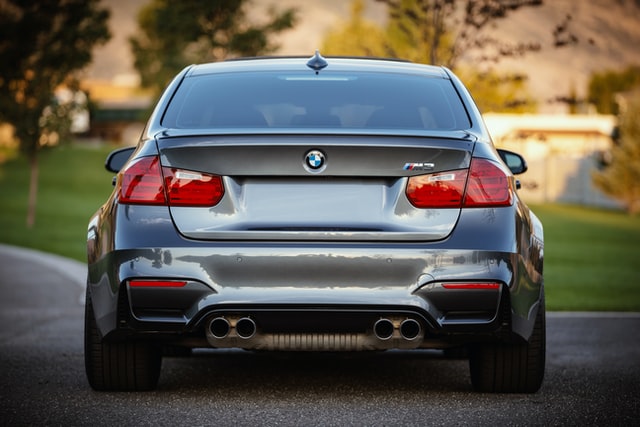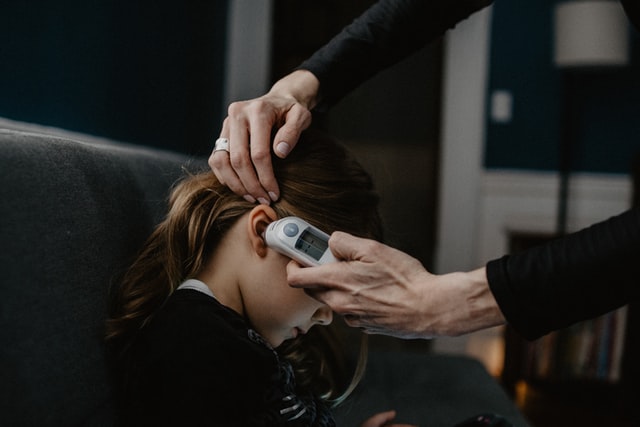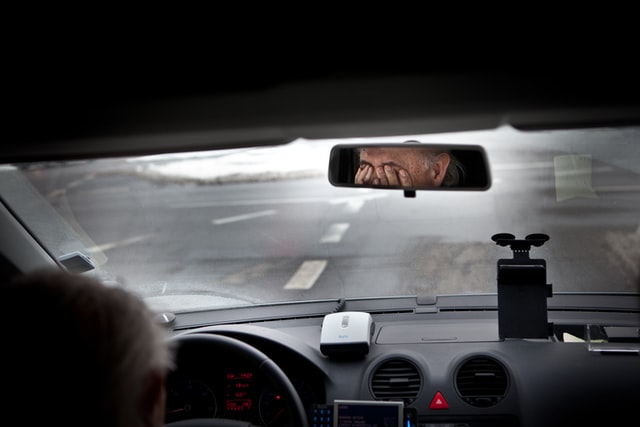Has car sickness ever affected you while you are driving? Did you ever feel like someone was pulling your chest after a long drive in the country? Or how about how your children feel when they get carsick? Well, it is time to stop all this and be free from car sickness.
Car sickness can be very unpleasant. It is also very common. Almost everyone has experienced car sickness or motion sickness at some point, especially as a child. Some people are severely affected, and it may ruin their entire trip, while other people are unaffected. We’re going to reveal some tips that might help you prevent, relieve, or manage car sickness so you can have a good time on your next road trip!
TYPES OF CAR THAT INDUCES CAR SICKNESS

Have you noticed that you only get nauseous in certain types of cars? This happens depending on the triggers of your car sickness. And to give you an idea of which kinds of vehicles you should avoid, here is the list that will ensure your safety during the ride.
Cars with bucket seats
Bucket seats are among the worst types of seats on which to ride. The bucket seat closes in on you, putting pressure on your body. When driving with bucket seats, you’ll find that they are too close to the steering wheel and challenging to adjust appropriately. This can cause uneasiness and even pain in some cases!
Cars without air-conditioning
If you’re a car person, then you know that cars with air-conditioning are not only more comfortable and enjoyable to drive but also healthier for your body. Air-conditioning keeps the driver and passengers cool and fresh, which helps prevent heat exhaustion or heat stroke. The same goes for cars without air-conditioning: they can cause dizziness and nausea due to overheating. This is also a significant problem when you’re stuck in traffic during hot summer days.
Sedans with a black interior
Dark colors absorb more heat and make it hard to see outside, while they also make it hard to see the road or dashboard. The same goes for the speedometer, radio, and pretty much everything else in your car that emits light. If you’re prone to nausea when driving at night (or any time), avoid sedans with black interiors like the plague or at least get one with a lighter shade of gray or tan if possible.
Luxury cars with opened sunroofs
Avoid luxury sedans with open sunroofs if you’re prone to car sickness. While it might seem like a great way to enjoy the fresh air and take in the scenery, it can actually make your experience more uncomfortable.
The reason for this is that when there are several openings in your vehicle (such as windows or an open sunroof), it creates turbulence in the air around you and makes it harder for your body to adjust its position relative to the movement of the car. Your brain might need more time than usual to figure out how much motion is coming from which direction, causing disorientation and nausea while you’re driving or boating on choppy waters.
Wet and humid days where the windows have to be rolled down
When the weather is wet and humid, you have to roll down your windows. This is because a closed car can cause car sickness more. If you are feeling sick while driving on a rainy day, try opening a window and letting some fresh air in. A cool breeze from an open window may make your symptoms go away faster.
Taking turns while staring at the motionless steering wheel and dashboard is a surefire way to get into trouble.
If you are for a long drive, avoid looking at your dashboard or anything steady. This is because your eyes are used to seeing things in motion. If there’s a sudden change of movements in your environment, it can trigger your car sickness and can make you nauseous. So if you start looking at moving things and you feel comfortable with that, keep on looking at them, such as the road.
REASONS FOR CAR SICKNESS

Aside from determining the types of car that you must avoid, it is also essential to know the medical reasons for car sickness. In this way, you will have more idea about managing this issue.
Vestibular Disorders
The vestibular system is the portion of your inner ear that controls balance, eye movement, and hearing. The system is made up of three semicircular canals and two otoliths (sensory organs).
The semicircular canals are responsible for detecting head rotation or body rotation in space. They each contain a small amount of fluid known as endolymph. When you move your head around while sitting still, this endolymph moves around in response to gravity and sends signals to the brain regarding how fast you’re rotating.
So, the faster you rotate, the faster your body’s fluids move. And if you turn more slowly, then fluids move less quickly. As a result of this rapid motion detection ability, when we’re hit by an abrupt shock (like getting into an accident), our bodies are able to respond quickly enough so that we aren’t hurt too severely during impact.
Inner Ear Infection
Inner ear infections can be caused by a virus, bacteria, or fungus. They are often accompanied by nausea, vomiting, dizziness, and hearing loss. If your child or anyone in the car is experiencing these symptoms while sitting in the back seat of a car or other vehicle, it may be possible that they have an inner ear infection. This can make them feel weak and ill at ease while traveling and should be treated with antibiotics as soon as possible to prevent any further complications from occurring.
Position of the Head
If your head is slightly in front of the middle of the seat, you can expect a more intense feeling of motion sickness. This is because when the body senses movement, it uses visual cues to determine how that movement happens. When we see a car moving forward, we know that our eyes are pointed straight ahead, and therefore we interpret this as forwarding rotation.
When our head moves in relation to the rest of our body (which does not move), we lose this visual cue and interpret what’s happening differently. It may appear like our bodies are rotating but staying still! This is why motion sickness often occurs when watching TV or movies with lots of camera movements. Even though it doesn’t feel natural (especially if you’re sitting down while watching), your brain thinks that it’s moving along with what’s on-screen and gets confused as a result.
Motion Sensitivity
Motion sensitivity is a condition in which people experience nausea and disorientation when traveling in cars or on other types of moving vehicles. This can be a specific problem for children, who are less likely to have developed a tolerance for such movement by the time they reach adolescence. The only way to know if you’re affected by motion sensitivity is to take a test drive with your doctor. However, it’s vital to remember that this condition is not dangerous nor requires treatment beyond staying hydrated while driving.
Anxiety or Nervousness
Anxiety is another one of the most prevalent causes of car sickness. It can be due to a fear of heights, a fear of driving, driving with other people, or simply being in an unfamiliar situation like getting into a new car. People who get carsick may experience anxiety when they feel that something isn’t safe or secure. For example, if you’re going through bad weather and start to feel like you might crash, you may also feel something wrong with your stomach as well as anxious about what will happen next.
OTHER COMPLEX REASONS
Car sickness is a complex condition, and there are many possible reasons why you might be susceptible.
For example, some people get car sick because they have low blood pressure, which makes them more likely to feel queasy when in motion. Other people may be sensitive to motion sickness triggers such as the smell of gasoline or smoke from cigarettes. If this happens often, it’s best to avoid these things while driving.
Some individuals also experience symptoms of anxiety when driving in particular places or situations (such as on crowded freeways), which can lead them to feel nauseous as well. It’s important to discuss any concerns with a doctor so that they can help figure out what might trigger symptoms for you personally and how best to prevent them!
HOW TO MANAGE CAR SICKNESS

Now that you know the reasons for your travel troubles, it’s time to learn how to manage your car sickness to enjoy your trip thoroughly. The following are suggestions on how to position yourself inside the car properly. So, do a little experimentation on yourself. Find what’s best for you, or you can mix-match them to get your maximum comfort.
Move away from the window.
The first thing to do is to move away from the window. This is a piece of great advice if you have motion sickness that focuses on peripheral vision. If your movements trigger your car sickness, then stay away from the window seat because your eyes will capture the fast movement and can get you in trouble.
You can just sit in the back seat or middle seat. These seats are the safest locations to avoid nausea during the ride. This applies to people who experience car sickness due to fast movements.
Sit in the front seat.
If you’re one of those passengers who get car sick, it’s best to sit in the front seat. If you have a bad back posture or even neck problem, it’s still better to sit in the front seat than not at all. Any vehicle’s middle and back seats have more motion than the front seat because they’re closer to the wheels and suspension system.
There are also more passengers near these areas who might accidentally kick your legs or spill on your head without noticing. And this is not great when you’re feeling nauseous! As mentioned above, avoid sitting by windows as well. But this doesn’t mean slamming them shut and leaving them that way always (though maybe do that if they’re open). Just don’t roll them down too far when driving through heavy traffic, so there isn’t much wind blowing into your face.
Sit facing forward, not sideways.
Sitting in the front seat of a car is likely to make you feel less nauseous than riding in the back seat. This is because the brain processes motion differently when you are facing forward than when you are facing sideways. As a result, it has a more challenging time processing any movement that occurs when you’re sitting sideways.
Of course, no one wants to sit in the front seat all of the time because it can be less convenient for passengers and drivers alike. That’s why researchers have identified some other ways to manage nausea during long car rides:
- Try changing positions periodically. This will help your brain from getting too used to one position and make it more likely that you won’t experience motion sickness later on in your journey!
- Avoid reading or watching movies while traveling. The screen can cause motion sickness as well!
Sit in the middle of the back seat.
When it comes to combating car sickness, keep an eye on the middle of the back seat. You might think it would be better to sit in an aisle seat with a clear view of your surroundings and a window available for fresh air, but this isn’t always the case. Sitting near an open window could actually cause extreme discomfort as there are often air currents created by movement outside or inside the car.
This is especially true when other passengers are seated next to you. The airflows produced by their movements often affect your health negatively if they create turbulence around your head area or make loud noises from opening doors or turning pages in books.
Keep your eyes on the road ahead rather than on your smartphone or tablet.
Don’t stare at your smartphone or tablet while driving. Keep your eyes on the road ahead, and only look away if you absolutely must. Also, do not eat while driving. If your stomach is growling and need to eat, pull over at a safe place and eat before riding back on the road again. Being too full can worsen your case because you can vomit at the same time.
Another tip is not to text or use social media apps while driving either. This will distract you from watching the road properly and increase your chance of having an accident by 400%.
Avoid reading books or comics in the car.
One of the best ways to prevent car sickness is to avoid reading books or comics in the car. Try listening to music instead! Reading books or any reading materials can just trigger your car sickness. You can also take over-the-counter antiemetic medicines that can induce sleep so that your body would feel relaxed.
Aside from these tips, it is also helpful to lessen car sickness by inhaling the scent of lemon or orange peel and even rubbing alcohol. It may seem ineffective at first, but you’ll see the effect after time passes.
BOTTOM LINE
Car sickness is one of the discomforts that many car-traveling people have experienced at some point in their lives. There are a variety of reasons that it can occur, but there are also several steps you can take to alleviate car sickness and travel safely and comfortably.
We hope this guide will help you manage the ups and downs of dizziness and car sickness. It’s likely that you’ll have to try several different approaches before you find what works best for you. And sometimes, that means enlisting the help of your passengers or driving solo at first. But with a little bit of patience and preparation, we’re confident that you can conquer your car sickness in just about any vehicle and enjoy the journey in comfort.
If you have already vomited in your car and have a difficult time thinking about how to clean it, check this next article by clicking here.
